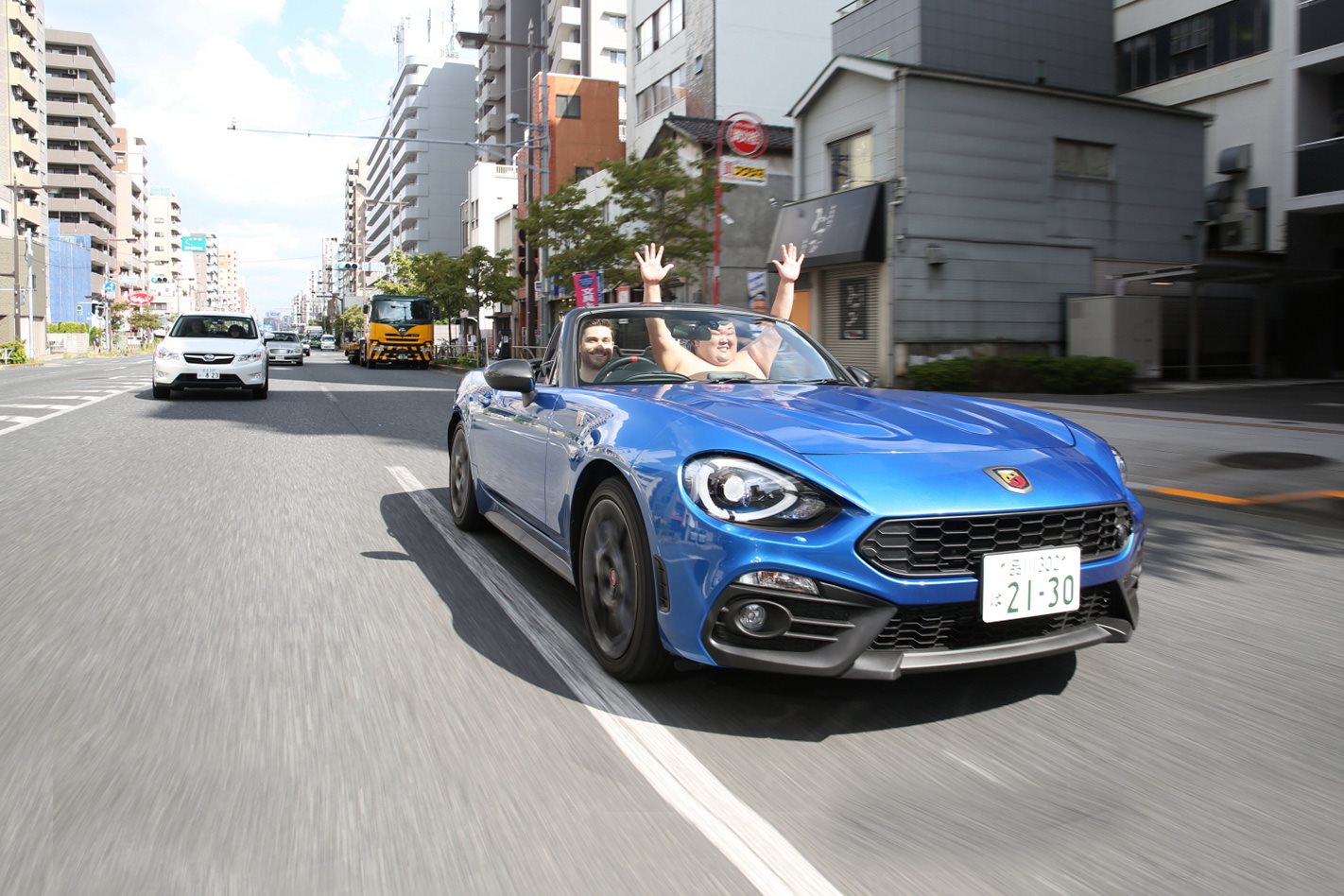YOU know you’ve hit peak weird when even the Japanese – a culture famous for talking toilets and selling dirty underwear in vending machines – stop and stare.
First published in the November 2016 edition of Wheels Magazine, Australia’s most experienced and most trusted car magazine since 1953.
I’m at the wheel of a bright blue Abarth 124 Spider and next to me, squashed unceremoniously into the passenger seat, his expansive 180kg frame spilling into my side of the intimate cabin, sits a mostly naked and very sweaty sumo.
This is central Tokyo on a baking 32-degree day and, as I reverse our car down a narrow one-way street towards a tiny Italian restaurant, I realise we’re causing a scene. People point, others wait in silence, their stony faces masks of frustration (I later realise they’re too polite to ask us to move). But most film us, immortalising our comically lopsided sports car on Instagram and Twitter.
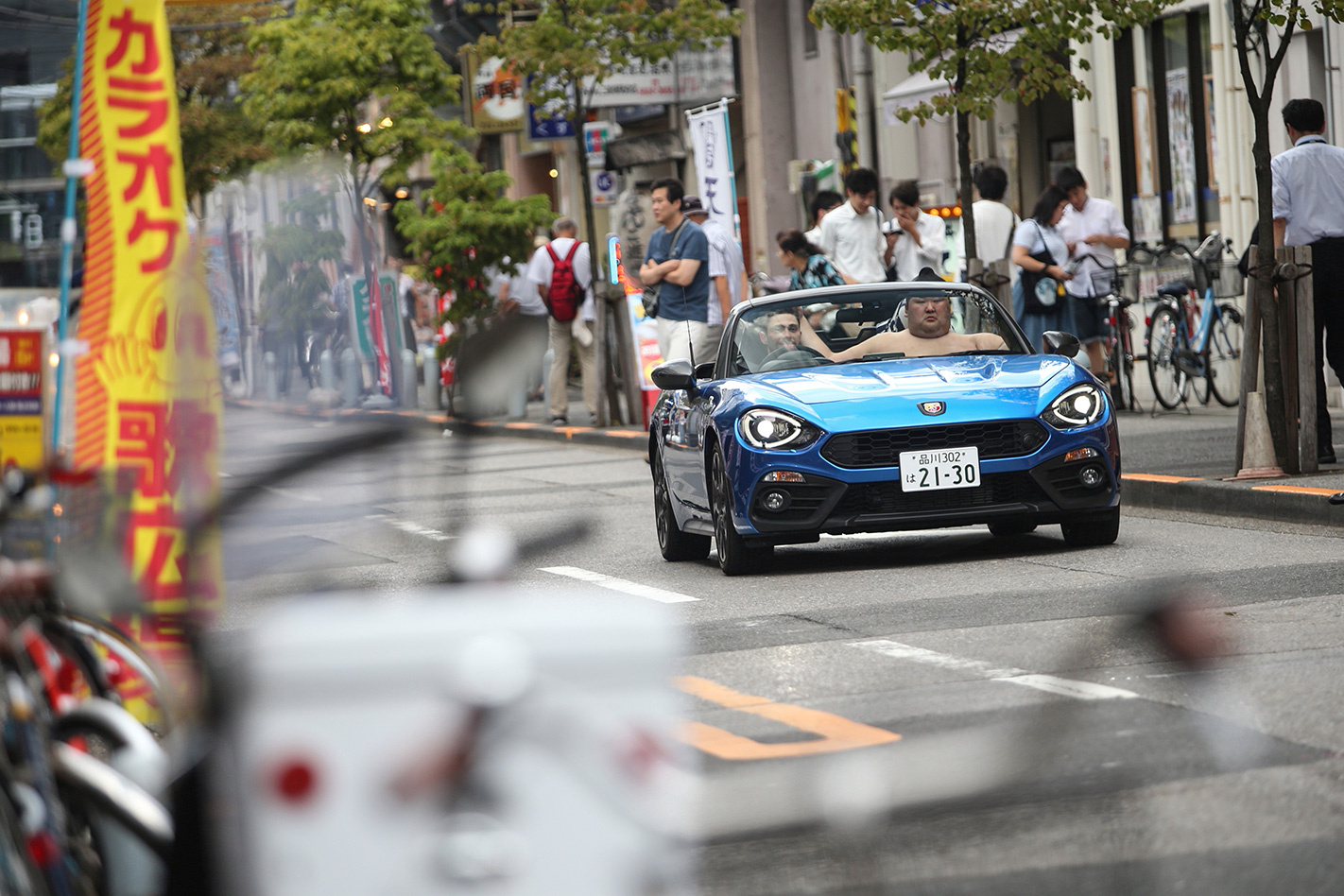
Then the sumo clambers out, his moist back peeling off the leather seat with a ssssssllllappp, and waddles over to a nearby vending machine. He pauses on the way to pose in a warrior squat, a move that sends the shutter of photographer Brunelli’s camera firing so quickly it sounds like a machine gun. But as much as the sumo is the centre of attention, it’s the Italian restaurant behind us that’s the most important prop here.
Wheels is in Tokyo as the first Aussie outlet to drive Fiat’s new halo car, though our visit has a deeper purpose. Our mission is to find ‘Little Italy’ in Japan, a clever twist on the Abarth’s multicultural heritage.
As much as Fiat will tell you the 124 Spider is a feisty Italian thoroughbred that harks back to the original 124 Spider of the ’60s, it shares most of its mechanicals with our reigning Car of the Year, the very Japanese Mazda MX-5. They were jointly developed, and use the same platform and a large portion of interior parts. The Abarth is even built in Japan, at Mazda’s Hiroshima factory.
Yet it would be unfair, and short-sighted, to dismiss the 124 Spider as a rebadged MX-5. While there are commonalities, the devil is in the chassis tuning. Abarth’s engineers have fitted firmer suspension with Bilstein dampers, a standard limited-slip diff and stronger four-piston Brembos, all designed to make their version feel feistier. And racier. And more Italian.
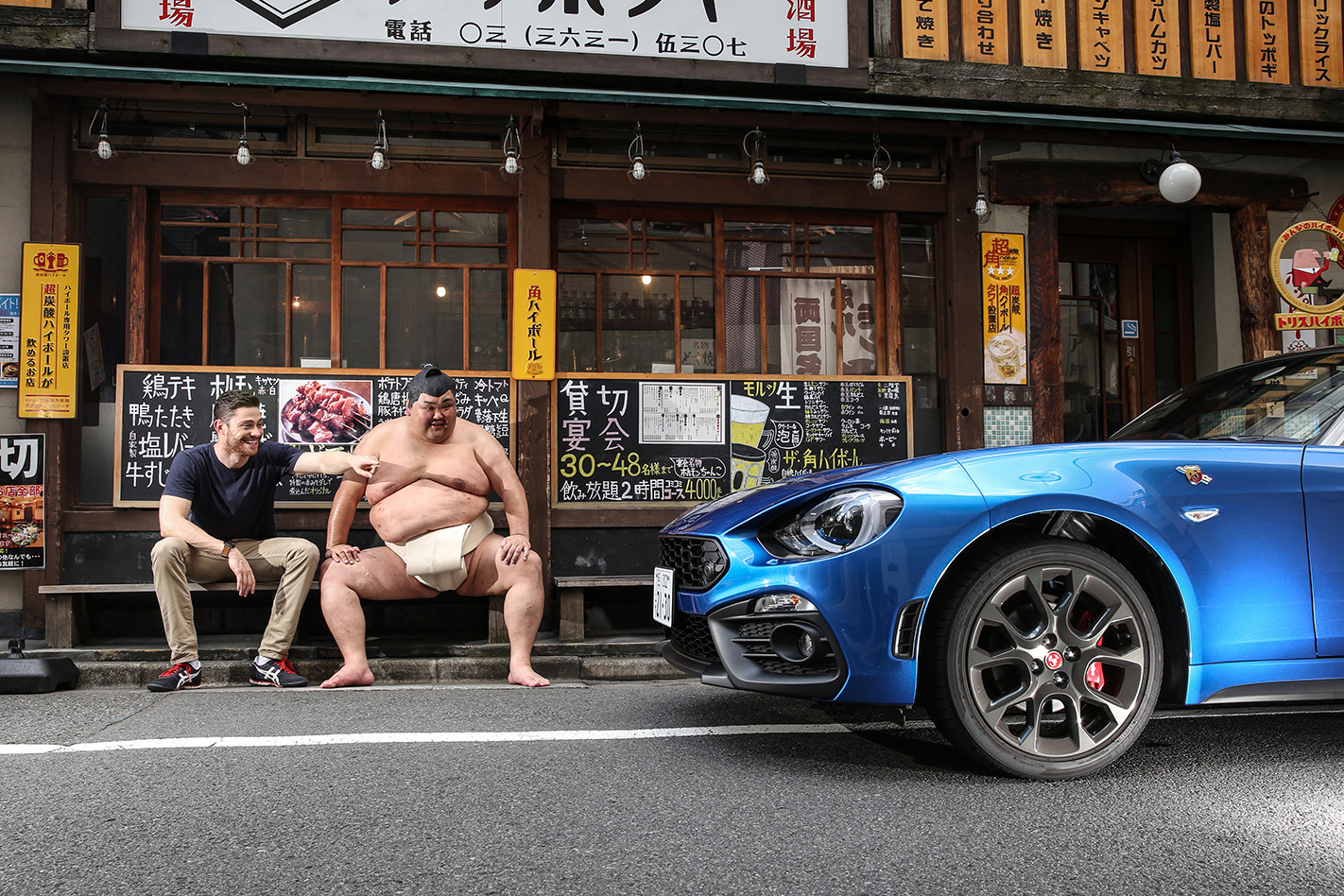
So the 124 Spider’s promise is obvious. If Abarth hasn’t mucked it up, it should deliver the same pared-back, beautifully balanced sports car thrills as the MX-5, only in a more focused, better-equipped, turbocharged package.
WE HAVE two days in Tokyo to tap into the Abarth’s potential, and to discover the essence of Italian culture in Japan. This little Italian restaurant, its tri-coloured flag hanging limply in the stagnant, humid air, is only the beginning. And the sumo? He’s a prop. A former pro and accused cheat turned gun for hire. For a few hours he provides a literal cultural clash: huge Japanese man meets small Italian car.
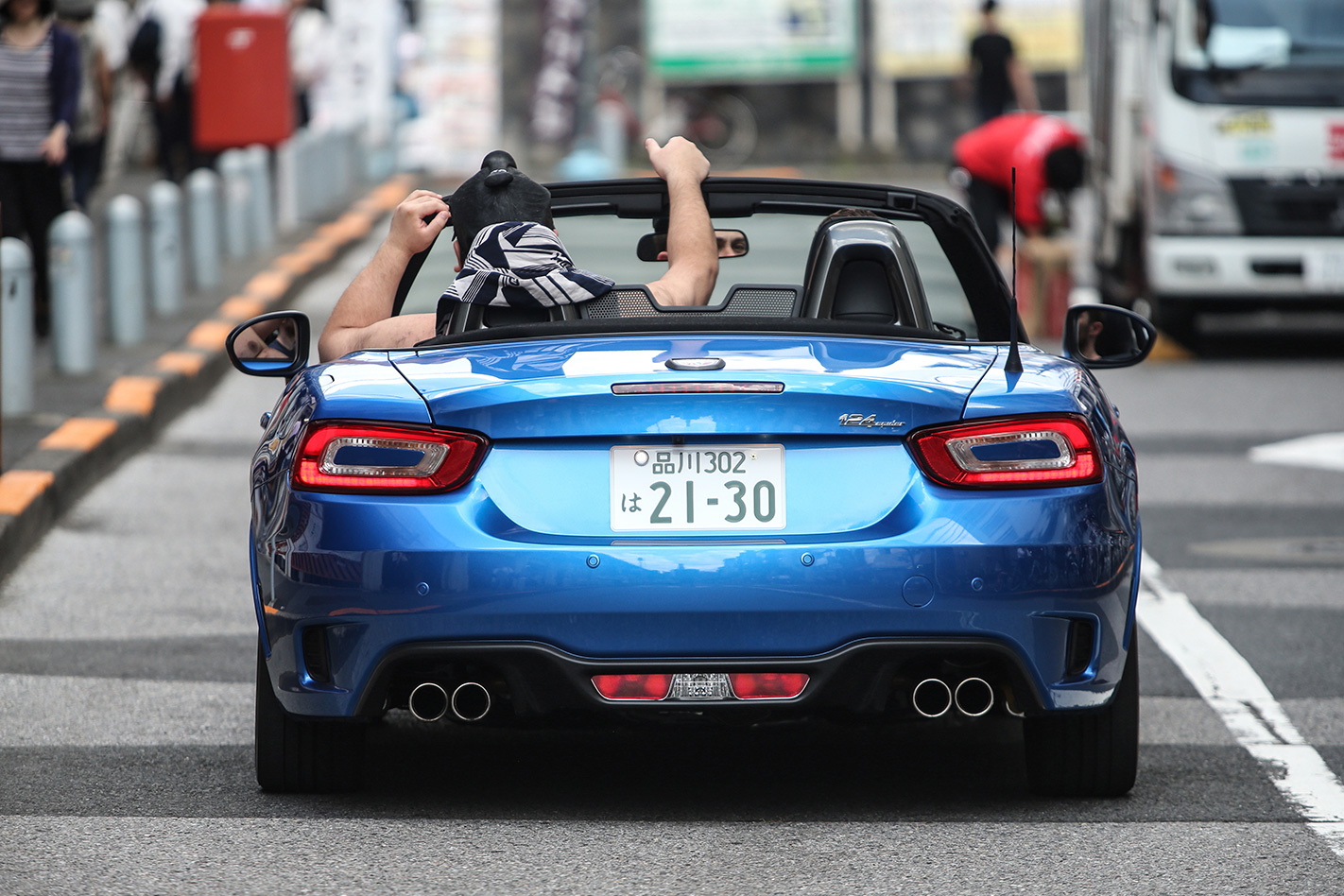
This is my first real opportunity to assess the Abarth, and straight away it’s positive. I love the way it looks, for a start. In photos, I’d thought the retro Italian design a little frumpy and ungainly, but in the metal the 124 Spider has presence. Its squared-off shoulders and wide, macho facia give it the flair and sense of swagger to distinguish it from the MX-5.
It’s the same inside. While the dash, sat-nav screen and steering wheel are all from Mazda, there are softer materials on the doors, the cabin feels slightly roomier and the leather seats are wider and more supportive. There’s a reversing camera, too, which is a glaring oversight in the Mazda. The only real visual complaint is the oversize, cheap-looking Scorpion badges glued to the nose and bootlid. They’re huge and tacky, like something you’d find in a cereal box.
A more positive discovery is how the 124 Spider sounds. Abarth versions score a four-outlet exhaust and a Sport button, so it fires into life with a satisfying braaaap. But easing our way through Tokyo’s thick traffic, I’m not convinced the 1.4 turbo has the bite to match its bark. The engine is lethargic at low revs and off-boost; it feels anaemic and sluggish.
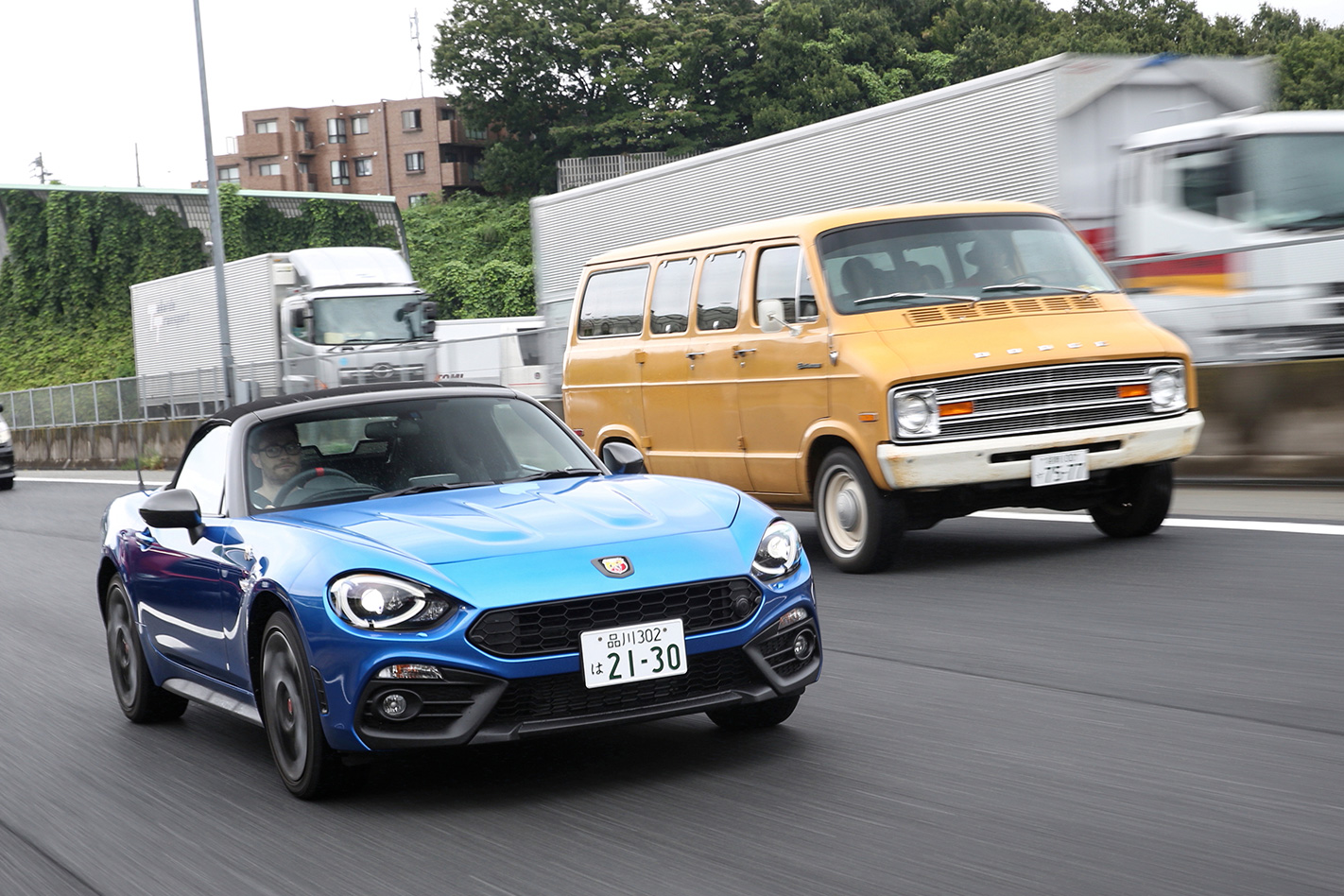
By the time I catch up, the metal roller-door is open and there, nestled in a narrow fluorescent-lit workshop, gleams a Maserati Khamsin. Under it, wearing immaculate blue overalls and wire-framed glasses, lies its owner, tinkering away with a handful of spanners. As my eyes adjust to the gloom of the cramped space, I see the shop houses another car – a baby-blue Ferrari 308.
The startled owner slides out and, with a slightly perplexed look, explains he’s been in this garage for 40 years. And while he’ll happily tune any car, he specialises in Italians. His shop is a tiny piece of Italy, hidden deep in the bowels of Tokyo, and it gives me hope. Little Italy does exist in Tokyo; you just need to look hard to find it.
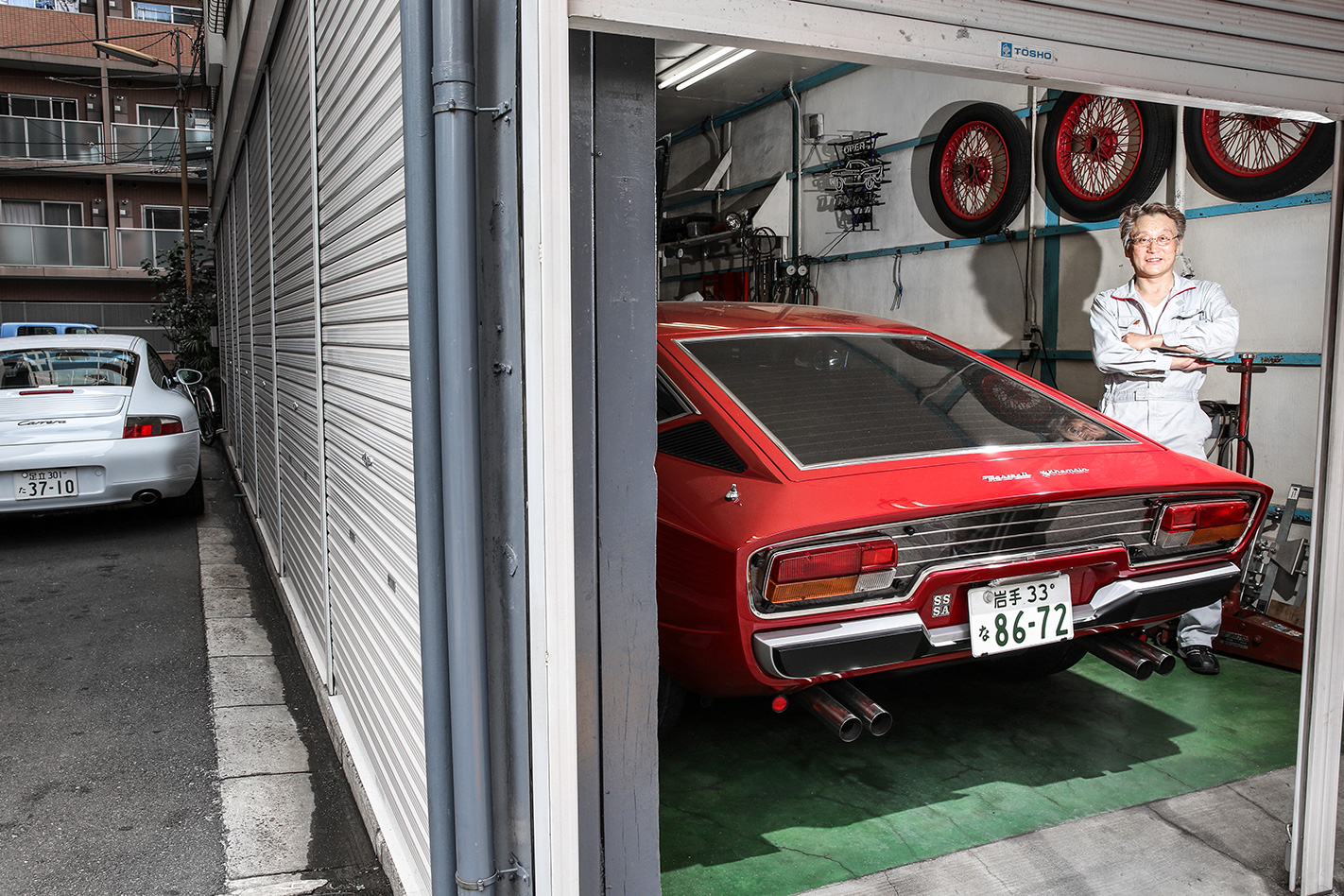
It’s humid and sticky as we thread our way along Tokyo’s endless maze of overpasses and tunnels, but even at this early hour, Japan’s love of cars is obvious. A silver R32 GT-R follows us, its owner staring intently at the Abarth’s blue exterior before he departs in a flurry of wheelspin and spent boost. A rare E60 AMG wafts past, its hulking black body and flared arches catching the light of the morning sun. We don’t see a single Italian car. Perhaps they’re all in the shop. It takes half an hour for the ugly square buildings that line the freeway to give way to the lush green fields of the Japanese countryside. Dark mountains silhouette the sky, their tops cloaked in cloud. I’m aiming for a piece of road I’ve wanted to drive for years, known as the Mazda Turnpike. It’s a 12km stretch of private toll road that winds up Mount Hakone, and is said to be smooth as a baby’s bum, wide and flowing. On a clear day it provides views of Mount Fuji.
I’m also told it should be virtually traffic-free, bar other like-minded enthusiasts out for a Sunday blast. But as we roll up to the turnpike’s entrance, I spot a problem. Beyond the boom gate is a speed sign, a black 50 painted in its centre. Japan’s love of rules and order means it’s likely to be strictly enforced.
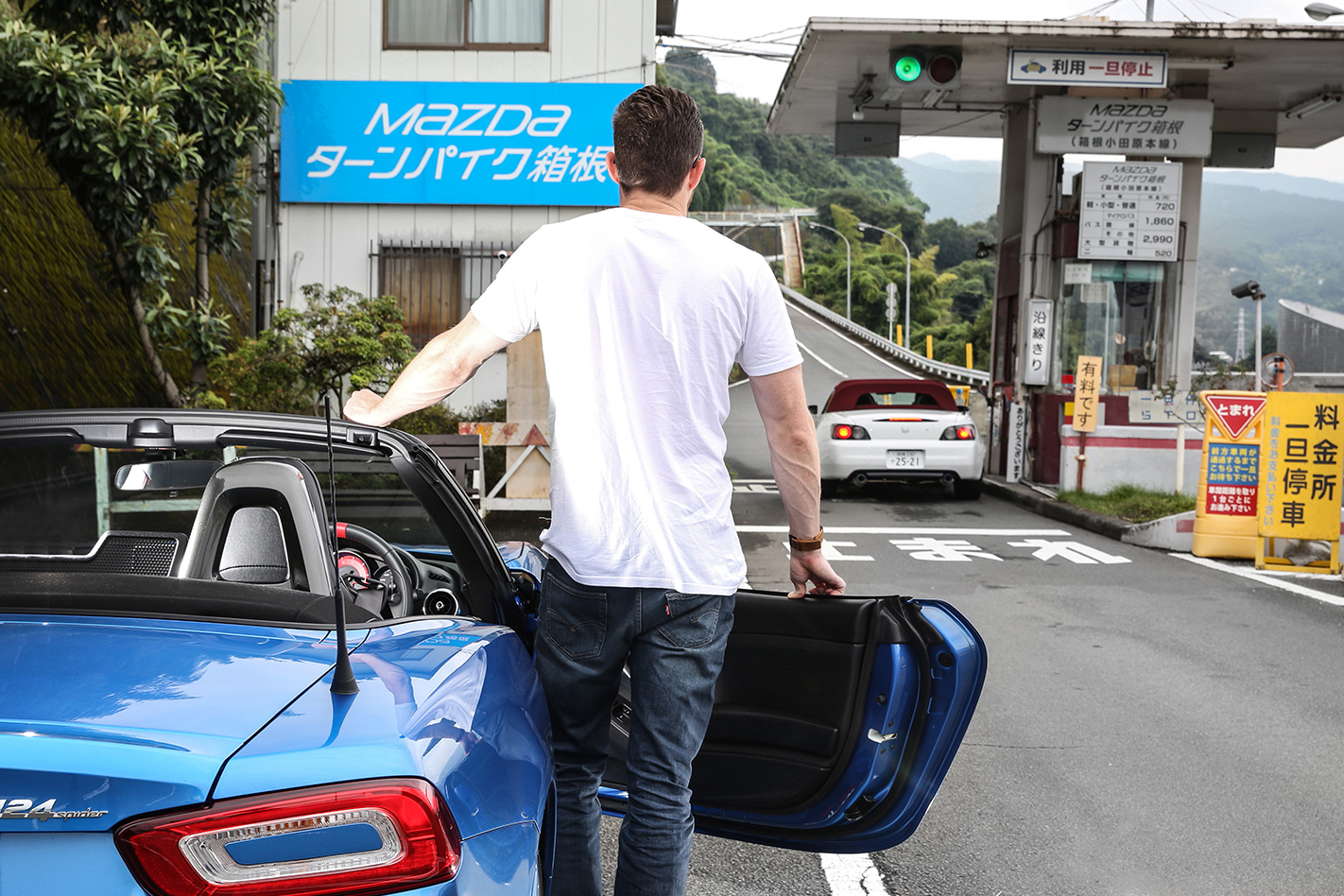
Both cars are long gone, but exploring this beautiful piece of road alone is no hardship. Especially in a car that loves corners as much as this. Abarth’s engineers wanted a firmer chassis set-up – they weren’t impressed with the amount of roll in the MX-5 – and their efforts are instantly evident. It’s keener to turn in and, while the firmer dampers, springs and sway bars haven’t dialled out the chassis’ inherent playfulness completely, it doesn’t roll onto the outside tyre as readily as the Mazda. It feels more locked down, more composed.
The steering is heavier, as is the manual gearshift (the 124 has different ratios and internals to cope with the turbo donk’s torque), but both are still pin-sharp and precise. The brakes are also spot-on; the pedal is reassuringly firm and easy to modulate on the cusp of ABS, which gives me the confidence to dive deeper and deeper into the turnpike’s mix of hairpins and sweeping bends.

The fun increases further by dialling in Sport. This sharpens the steering and throttle response, and loosens the electronic nanny, but even with the safety net it’s possible to slide the rear 205/45R17 Bridgestones.
At 1060kg the Abarth is slightly heavier than the MX-5 – mostly due to the turbo engine, longer front overhang and curvaceous rear end (which boosts boot space by 10 litres) – but the chassis has a beautiful sense of balance. There’s little understeer and, as load builds and the weight transfers to the rear axle, oversteer is a doddle on corner exit. It’s brilliant.
We quickly devour the turnpike’s 12km stretch and pull into a restaurant at the top for lunch. It’s foggy up here, which conceals Mount Fuji, but the carpark is a melting pot of Porsches, Civic Type Rs, Toyota MR2s and, parked in a line, generations of MX-5s – a ratty red NA, two NBs and a white NC. I park the Abarth next to them, an Italian cousin completing the family tree.
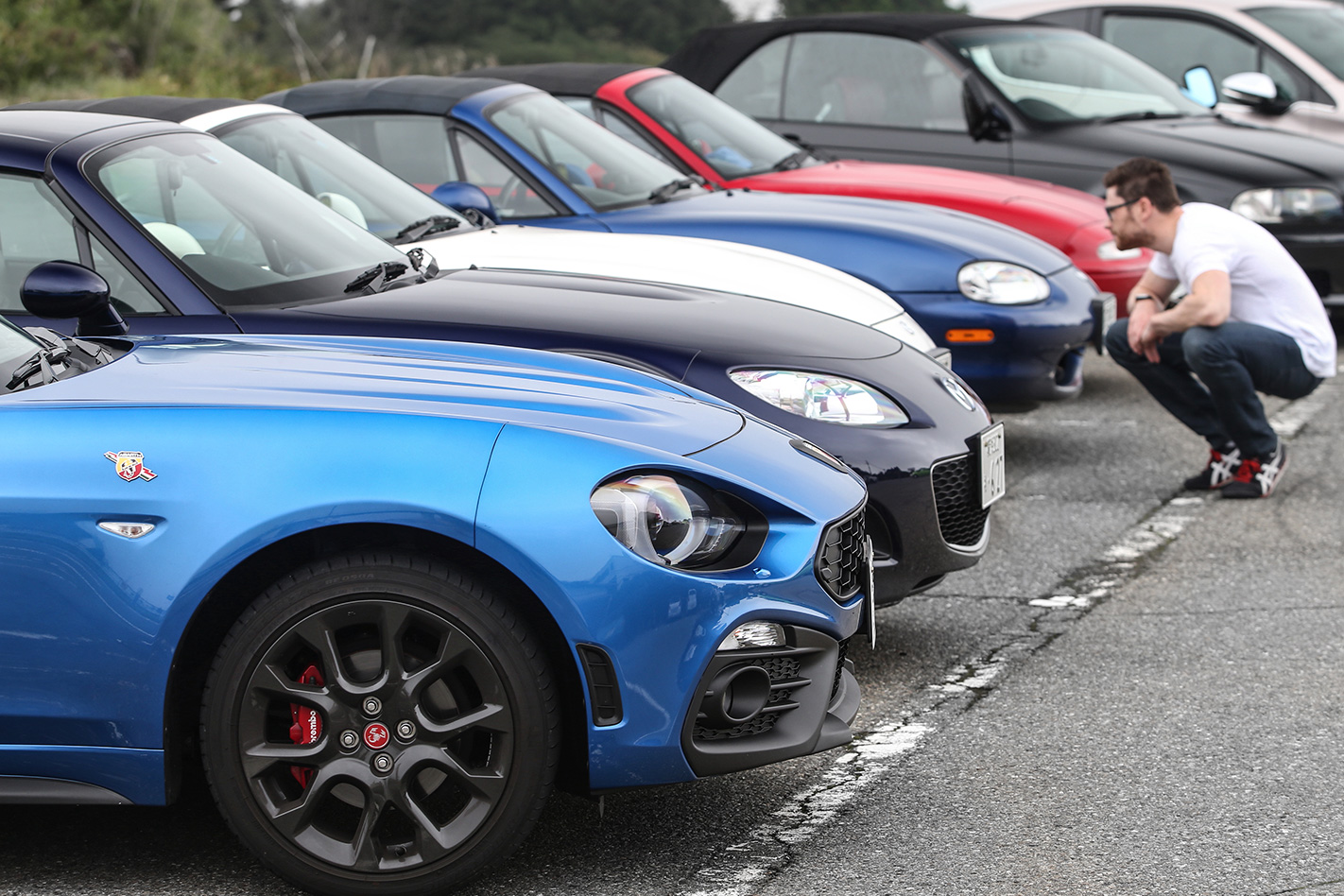
“It is… yours?” they ask in hushed whispers. One runs his hand reverently over the huge Abarth badge. Popping the bonnet intensifies their sense of awe. Fingers point straight to the silver snail mounted high on the right-hand side of the engine and in unison two of the group whisper “tuuuuurrrrbbboooooo”.
Another owner, a short man with a yellow shirt and a pink camera, is particularly excited and knows exactly what the 124 Spider is. “Italian MX-5,” he says, staring lustily into the engine bay.
“Yes,” I answer, “Do you like it?”
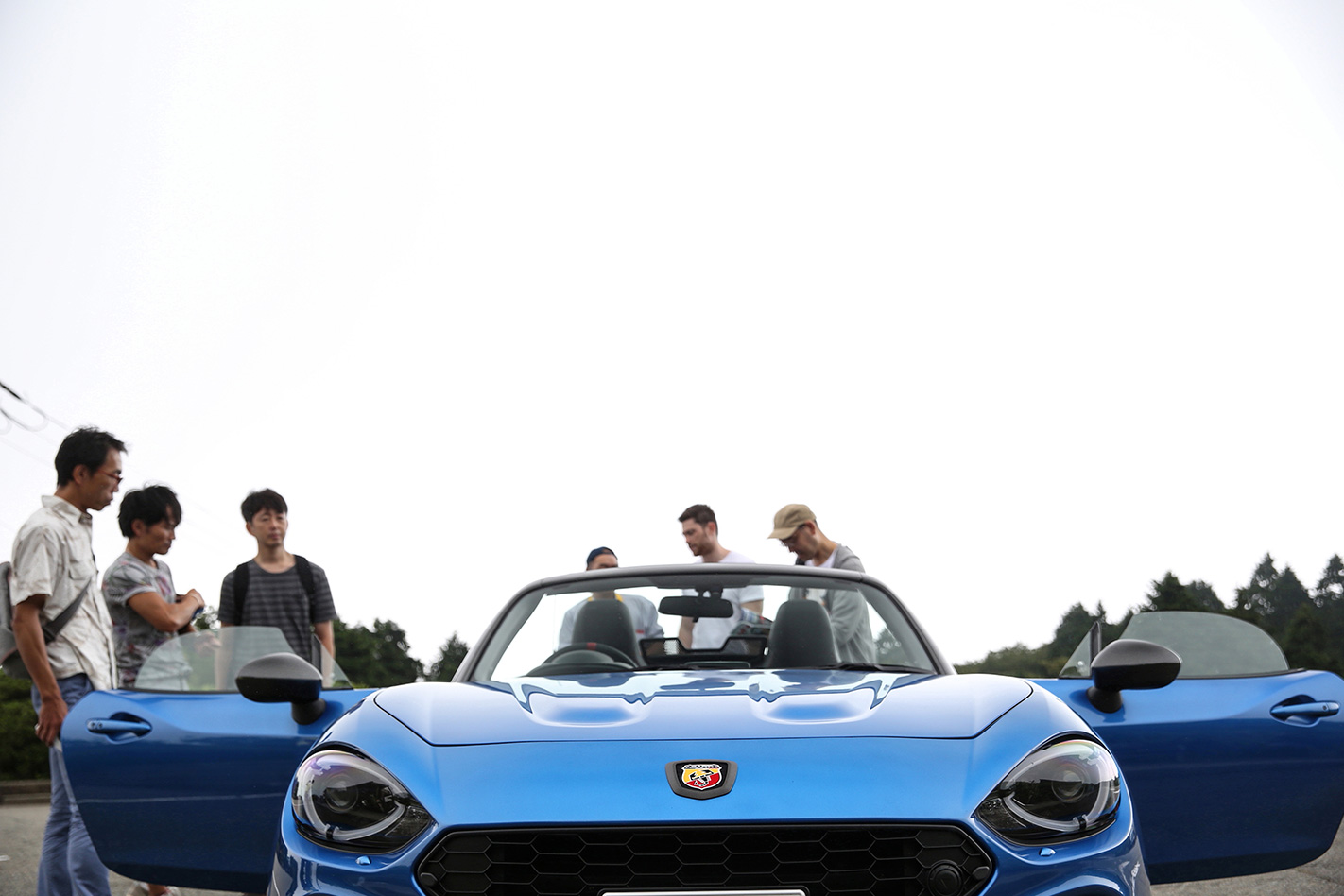
WE LEAVE the MX-5s behind and continue our search for the drift roads. Aside from some scattered tyre marks in a pull-out bay on the turnpike, Japan’s drifting culture has proven elusive. At least until we crest a hill on yet another breathtaking mountain road and get our first taste; a huge carpark, looking out to a barely visible Mount Fuji, its tarmac painted with rubber. Special attention has been given to a large rock monument, which is surrounded by endless rings of tyre marks. In typical Japanese style, they’re wonderfully uniform. Like a single black donut.
Admittedly, this isn’t really a drift road, but with the light fading and a two-hour drive back to Tokyo looming, I quickly add some of the Abarth’s rear rubber to the circle and head for the freeway.
Then, out of nowhere, I find them. Google maps has sent us down a narrow, tree-lined road that links hairpin after hairpin. The winding piece of tarmac is only wide enough for one car, but that hasn’t deterred the drifters. The tyre marks start halfway down and, as I stop so Brunelli can capture them on his camera, a silver NB MX-5 bursts into view, its tail tracing a perfect line around the hairpin below us. The driver, an ageing silver-haired man in a business suit, slows as he cruises past, drinks in the Abarth’s blue hue and our stunned faces, then drops a cog and slides further up the hill with precision.
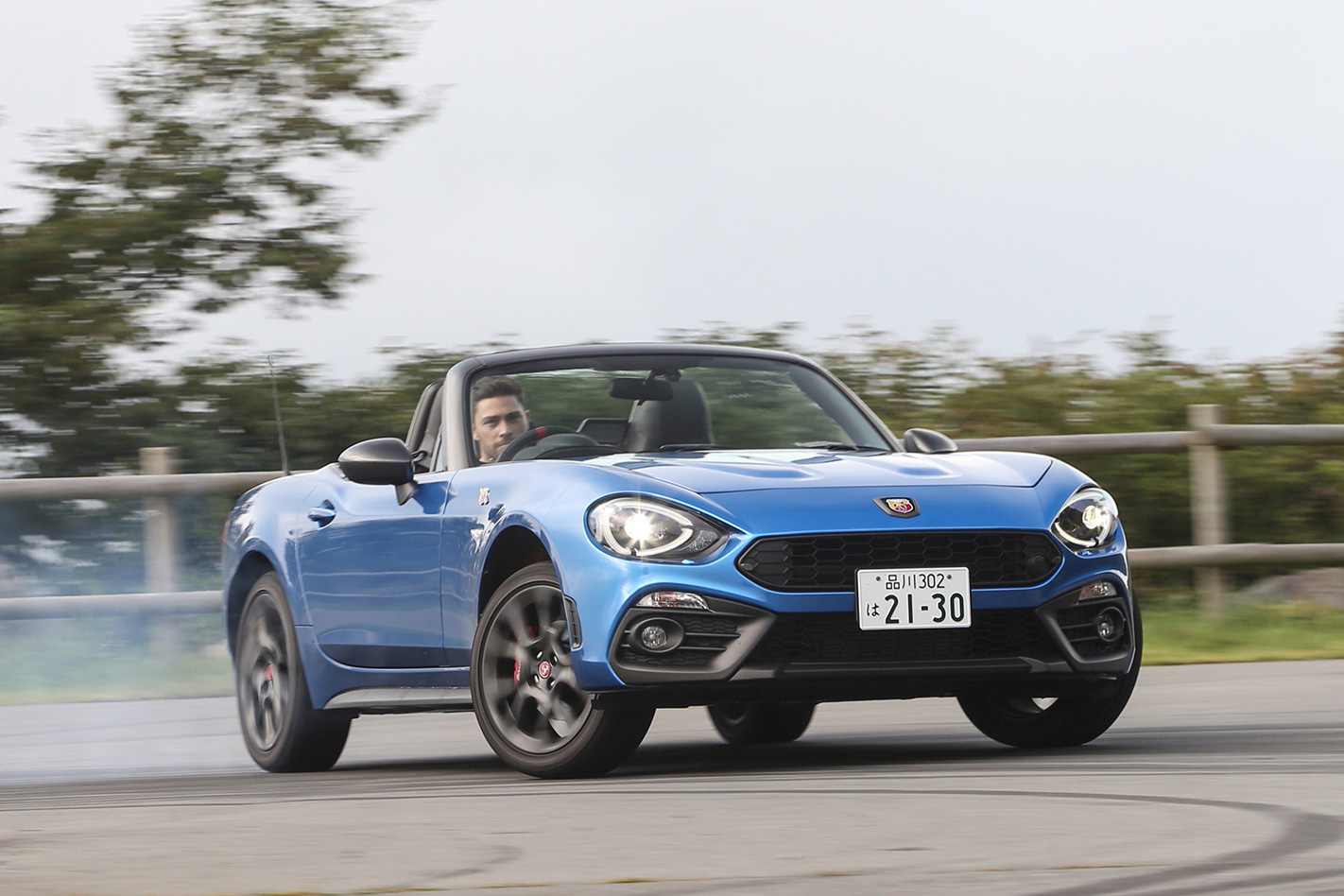
“There’s no Italian neighbourhood here like you’d find in New York, or even in Melbourne,” he’d said when we collected the car. “But the Japanese love Italian culture. For them it’s quite aspirational and many people embrace it wholeheartedly. Everything in Japan is structured, there are so many rules; but the Italians have more flair, they live life to the fullest.”
It’s a sentiment that the Abarth embodies perfectly. While its Japanese bones are obvious, its flamboyant personality is pure Italian.
Is it better than an MX-5? A step beyond our reigning COTY? The purists will say no. It’s not as pared back or as true to the roadster philosophy, and the turbo has changed the fabric of its DNA. Where the Mazda comes alive high in the rev range as you wring every last drop of performance from its atmo engine, the Abarth is lazier. More muscular, its mid-range torque (and plusher interior) making it more relaxing to drive every day.
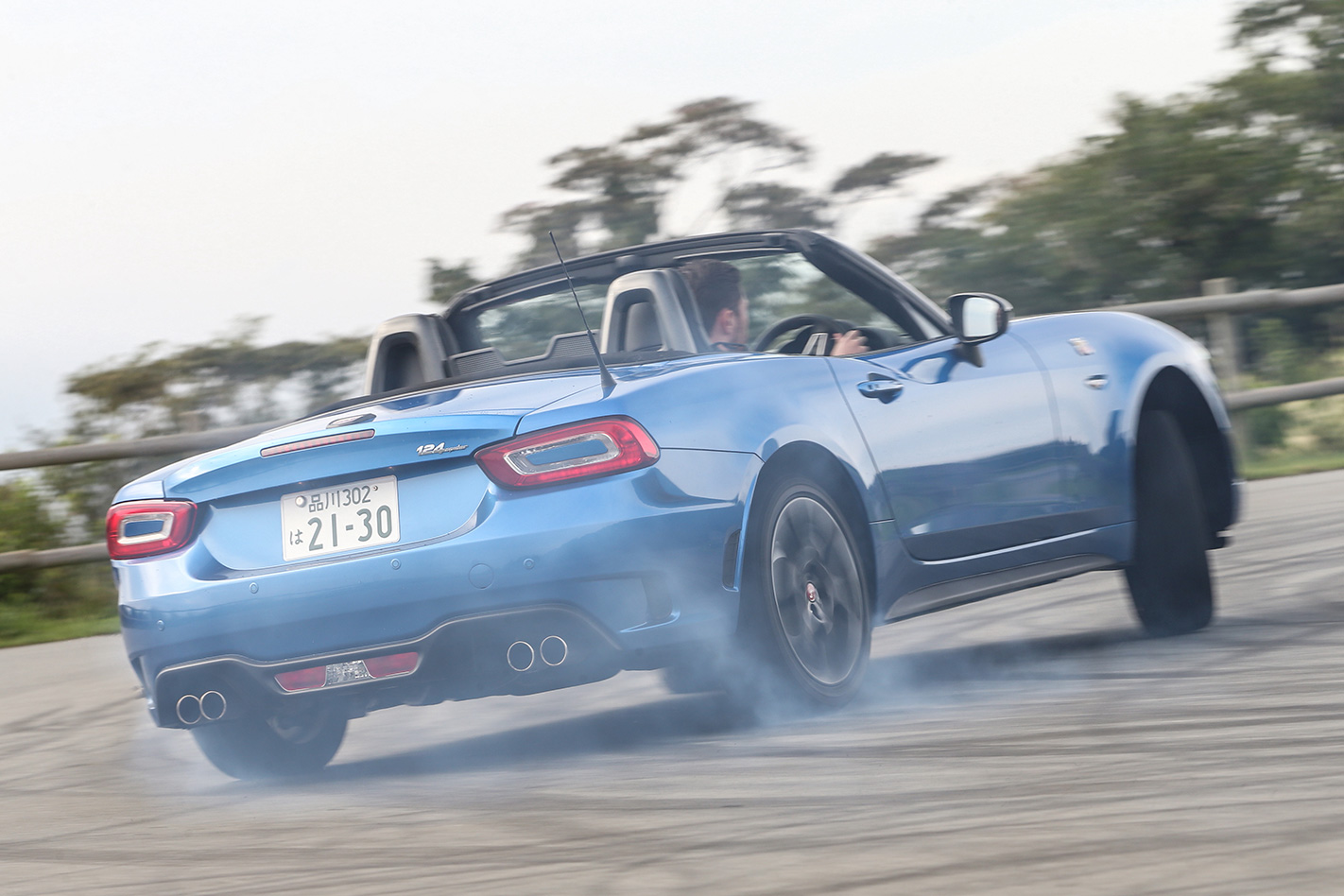
It’s way more Italian than that.


